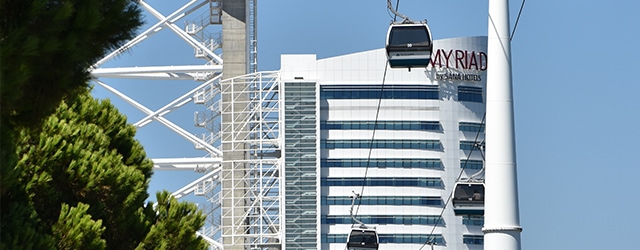In April, Canadian rating agency DBRS confirmed a stable outlook for its BBB (low) credit rating for Portugal—the country’s only investment-grade credit rating from a top global rating agency. Global Finance interviewed Adriana Alvarado, DBRS’ lead analyst on Portugal, for her views on the nation’s economy and prospects.

Global Finance: DBRS left Portugal’s credit rating above investment grade in April. The decision was apparently based on a 2016 fiscal deficit that was lower than the target set by the European Commission. What are your expectations for 2017?
Adriana Alvarado: DBRS confirmed the Stable trend because we view risks to the rating as fairly balanced. There was an important improvement in the overall budget deficit in 2016, but the improvement in the structural deficit was more limited, and government debt remains high. The decline in the fiscal deficit last year was in part driven by temporary measures, which raised some concerns about the durability and quality of the consolidation. However, if public spending remains firmly contained, if the economy continues to grow steadily, and borrowing costs remain manageable, then the fiscal deficit should fall below 2% of GDP in 2017.
GF: Other credit rating agencies have rated Portugal below investment grade. What else—aside from the deficit—explains your decision?
Alvarado: Our BBB (low) rating for Portugal does not only incorporate the significant structural fiscal adjustment that Portugal achieved since 2011, but also reflects a small current account surplus, after a large correction of the external deficit. Eurozone membership and adherence to the EU economic governance framework, as well as a favorable debt maturity structure, are also important factors supporting the rating for Portugal.
GF: Portugal GDP posted positive growth for 13 consecutive quarters in 2016, a yearly rate of 1.9%, the highest reading in more than six years. How much of the country’s current economic recovery explains DBRS’ rating?
Alvarado: Portugal’s economic recovery has partially contributed to the improvement in the fiscal deficit, but the recovery itself is not a factor directly supporting the rating. Recent growth has been higher than expected, but Portugal’s potential growth is relatively low.
GF: Six years after the EU/IMF bailout, Portugal’s public debt to GDP is the third highest in the EU. How does this make the country vulnerable to increases in interest rates?
Alvarado: The high level of public debt and large financing needs expose Portugal to higher interest rates and adverse changes in investor sentiment. The relatively long debt maturity profile partly mitigates some of the risks. However, a prolonged period of elevated interest rates, in the absence of corresponding economic growth, could affect debt dynamics over time.
GF: How vulnerable is the country’s financial system? What is the impact of this vulnerability on Portugal’s economy?
Alvarado: Nonperforming loans (NPLs) remain high and banks’ profitability remains weak. The recapitalization of state-owned bank CGD [Caixa Geral de Depositos] and the capital increases by the other largest banks should place the banking sector in a better position. However, a failure to deal with NPLs in a systemic way could leave banks vulnerable and affect confidence in the banking sector and the economy.
GF: Long-term growth perspectives remain limited in Portugal. What kind of reforms would the country need to expand its potential?
Alvarado: Growth-enhancing reforms that result in higher levels of investment and higher productivity should contribute to stronger potential growth.



